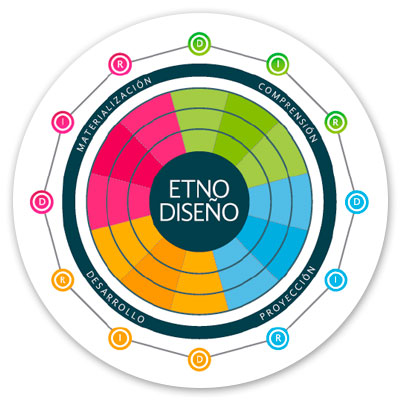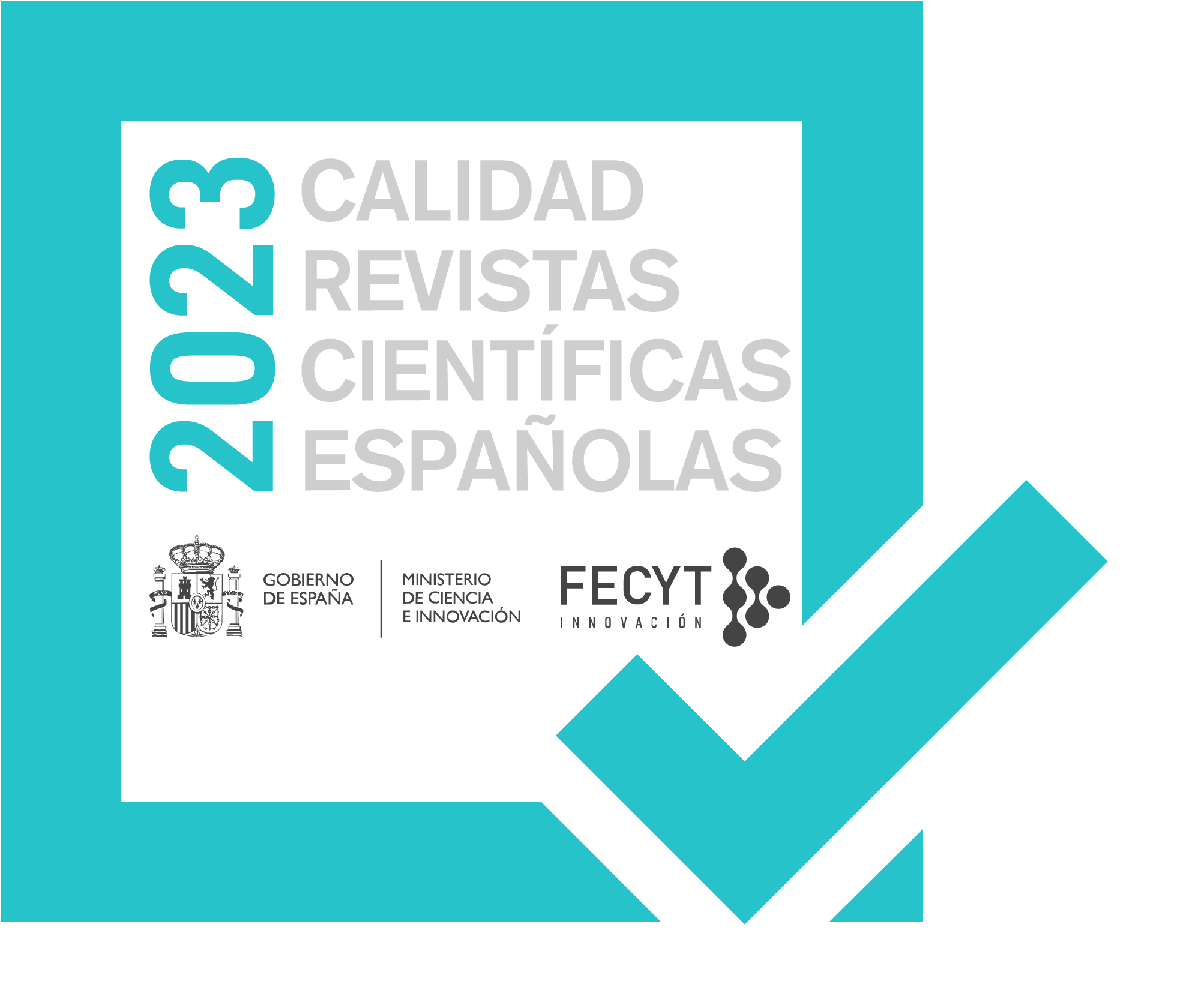Ethno-design
A Design model from the ethnographic perspective and its contribution to the education of design
DOI:
https://doi.org/10.24310/Idiseno.2020.v15i0.9574Keywords:
ethno-design, ethnography, design, education of designAbstract
Design and ethnography are two disciplines that have found ways to contribute to one another. More specifically, design practice has found ethnography ways to understand people's needs. However, because of the acceleration of different processes of production and consumption of goods, ethnography has been incorporated into the design practice only partially, wasting the full value that ethnography can bring to design.
In this article, we propose Ethno-design, a model that brings the essence of ethnography to be incorporated into the design process, with the intention of developing interconnections between both disciplines that allow them to keep their nature and reach. Ethno-design is presented here as a tool that promotes design as an agent of social change in favor of people and their contexts.
Finally, from the theoretical perspective and the first application of the model in teaching, research, and professional practices, we identified several aspects that allow reflection about how the model could collaborate in design education.
Downloads
Metrics
References
Balla, L., & Ormerodb, T. (2000). Applying ethnography in the analysis and support of expertise in engineering design. Design Studies, 403-421. doi:https://doi.org/10.1016/S0142-694X(00)00009-0
Borja, M. (2017). Tips sobre innovación. Notoria: innovación en gran consumo, 5.
Button, G. (2000). The ethnographic tradition and design. Design Studies, 21, 319-332. doi:https://doi.org/10.1016/S0142-694X(00)00005-3
Castellion, G., & Markham, S. (2012). Perspective: New Product Failure Rates: Influence of Argumentum ad Populum and Self?Interest. Journal of Product Innovation Management, 976-979.
Cerri, C. (diciembre de 2010). La importancia de la metodología etnográfica para la investigación antropológica. perifèria, 13(2).
doi:https://doi.org/10.5565/rev/periferia.549
Charlotte, R., & Gislev, M. (2015). Design Anthropology in Participatory Design. Interaction Design and Architecture(s) Journal - IxD&A(26), 73-80.
Clark, A. (2011). Design Anthropology: Object Culture in the 21st Century. (Springer, Ed.)
Cotán, A. (2020). El método etnográfico como construcción de conocimiento: un análisis descriptivo sobre su uso y conceptualización en ciencias sociales. Márgenes, Revista de Educación de la Universidad de Málaga, 1(1), 83-103. doi:http://dx.doi.org/10.24310/mgnmar.v1i1.7241
Crabtree, A., Rouncefield, M., & Tolmie, P. (2012). Doing Design Ethnography. Springer-Verlag London. doi:10.1007/978-1-4471-2726-0
Cruz, B., & Perez, A. (2017). Diseño y Antropología: un vínculo en expansión. i+Diseño. Revista científico-académica internacional de Innovación, Investigación y Desarrollo en Diseño, 12, 66-86. doi:http://dx.doi.org/10.24310/Idiseno.2017.v12i0.3036
Design-Council. (2007). Eleven lessons: managing design in eleven global companies. Londres: Design Council.
Ehn, P. (1988). Work-Oriented Design of Computer Artifacts. Stockholm: Arbetslivscentrum.
Friedman, K. (2002). Conclusion: Towards an Integrative Design Discipline. En S. S. Byrne, Creating Breakthrough Ideas: The Collaboration of Anthropologists and Designers in the Product Development Industry (págs. 199-214). Bergin and Garvey.
Fuad-Luke, A. (2002). Carlos Fiorentino | Design Education & Research. Recuperado el 30 de Noviembre de 2018, de https://carlosfiorentino.files.wordpress.com/2010/03/slow-des.pdf
Gunn, W., Otto, T., & Charlotte, R. (2013). Design Anthropology: Theory and Practice. Bloomsbury Academic.
John, T. (2013). Diseñando para un mundo complejo. Acciones para lograr la sustentabilidad. Designio.
Kensing, F., & Blomberg, J. (1998). Participatory Design: Issues and Concerns. Computer Supported Cooperative Work (CSCW), 7, 167-185. doi:https://doi.org/10.1023/A:1008689307411
Ladner, S. (13 de enero de 2012). Ethnography matters. Recuperado el 22 de Marzo de 2018, de http://ethnographymatters.net/blog/2012/01/13/does-corporate-ethnography-suck-a-cultural-analysis-of-academic-critiques-of-private-sector-ethnography-part-1-of-2/
Lindley, J., & Sharma, D. (2014). An ethnography of the future.
Martín Juez, F. (2002). Contribuciones para una antropología del diseño. Barcelona: Gedisa.
Martínez, M. (2004). El Método Etnográfico de Investigación. Dialógica, 1(1), 13-44.
Murphy, G., & Marcus, G. (2013). Epilogue: Ethnography and Design, Ethnography in Design... Ethnography by Design. En W. Gunn, T. Otto, & R. Charlotte, Design Anthropology: Theory and Practice. Bloomsbury Academic.
Norman, D. (1988). The Psychology of Everyday Things. Nueva York: Basic Books.
Norman, D., & Draper, S. (1986). User Centered System Design; New Perspectives on Human-Computer Interaction. NJ: L. Erlbaum Associates Inc. Hillsdale.
Otto, T., & Charlotte, R. (2013). Design Anthropology: A Distinct Style of Knowing. En W. Gunn, T. Otto, & R. Charlotte, Design Anthropology: Theory and Practice. Bloomsbury Academic.
Ramos, J. (2017). Etnografía concéntrica y didáctica. Notas para no-antropólogos. noésis, 76-89.
Reese, W. (2002). Behavioral Scientists Enter Design: Seven Critical Histories. En S. Squires, & B. Byrne, Creating Breakthrough Ideas: The Collaboration of Anthropologists and Designers in the Product Development Industry (págs. 17-44). Bergin & Garvey.
Restrepo, E. (2016). Etnografía: alcances, técnicas y éticas. Bogotá: Envión Editores.
Sahlins, M. (1997). O "pessimismo sentimental" e a experiência etnográfica: por que a cultura não é um "objeto" em via de extinção. Mana, 3(1), 41-73. doi:http://dx.doi.org/10.1590/S0104-93131997000100002
Schuler, D., & Namioka, A. (1993). Participatory Design: Principles and practices. Lawrence Erlbaum Associates, Publishers.
Spradley, J. (1979). The ethnographic interview. Orlando: Holt, Rinehart and Winston.
Strauss, C., & Fuad-Luke, A. (8 de 12 de 2018). Raaf. Obtenido de http://raaf.org/pdfs/Slow_Design_Principles.pdf
Suchman, L. (2011). Anthropological Relocations and the Limits of Design. 40, 1-18. doi:https://doi.org/10.1146/annurev.anthro.041608.105640
Thackara, J. (2013). Diseñando para un mundo complejo: acciones para lograr la sustentabilidad. México: Designio.
Trujillo-Suarez, M., Aguilar, J., & Neira, C. (2016). Los métodos más característicos del diseño centrado en el usuario -DCU-, adaptados para el desarrollo de productos materiales. Iconofacto, 215-236.
Tunstall, E. (2013). Decolonizing Design Innovation: Design Anthropology, Critical Anthropology, and Indigenous Knowledge. En W. Gunn, T. Otto, & R. Charlotte, Design Anthropology: Theory and Practice. Bloomsbury Academic.
Wasson, C., & Metcalf, C. (2013). Bridging Disciplines and Sectors: An Industry-Academic Parthership in Design Anthropology. En W. Guun, T. Otto, & R. Charlotte, Design Anthropology: Theory and Practice. Bloomsbury Academic.

Downloads
Published
How to Cite
Issue
Section
License
Aquellos autores/as que tengan publicaciones con esta revista, aceptan los términos siguientes:- Los autores/as conservarán sus derechos de autor y garantizarán a la revista el derecho de primera publicación de su obra, el cuál estará simultáneamente sujeto a la Licencia de reconocimiento de Creative Commons que permite a terceros compartir la obra siempre que se indique su autor y su primera publicación esta revista.
- Los autores/as podrán adoptar otros acuerdos de licencia no exclusiva de distribución de la versión de la obra publicada (p. ej.: depositarla en un archivo telemático institucional o publicarla en un volumen monográfico) siempre que se indique la publicación inicial en esta revista.
- Se permite y recomienda a los autores/as difundir su obra a través de Internet (p. ej.: en archivos telemáticos institucionales o en su página web) antes y durante el proceso de envío, lo cual puede producir intercambios interesantes y aumentar las citas de la obra publicada. (Véase El efecto del acceso abierto).






14.png)



